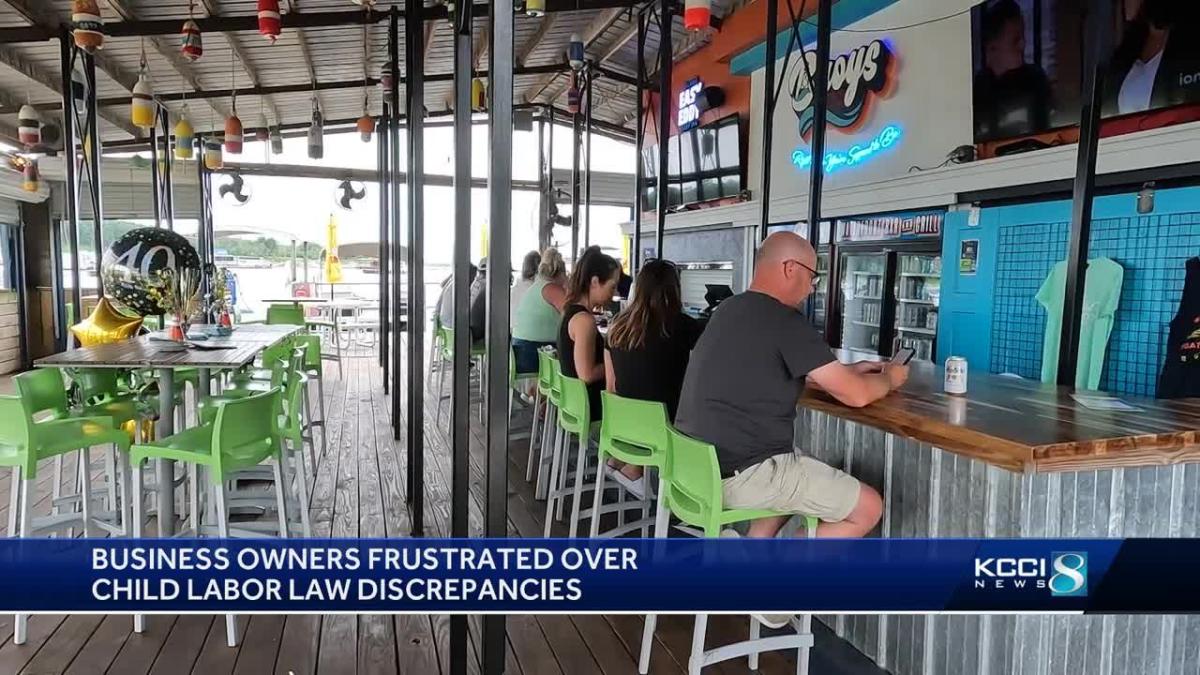‘It’s confusing’: Iowa restaurant owner fined for child labor violations despite following state law

Sustainable Development Goals (SDGs) and Child Labor Violations in Iowa
Introduction
One Iowa restaurant owner fined for child labor violations says he didn’t know he was doing anything wrong. Jason Schomer, the owner of Buoy’s Waterfront Bar and Grill on Saylorville Lake, received a call from the U.S. Department of Labor in July 2023. The caller informed the department about the restaurant’s hiring of 14- and 15-year-olds based on a complaint from a former worker.
Investigation and Fines
A department worker thoroughly reviewed Schomer’s time sheets and requested all relevant paperwork and documentation related to hiring. After nearly five months, Schomer received a letter in the mail imposing a fine of over $1,600. The fine cited three hours of standards violations for employing 14- and 15-year-olds. Despite paying the fine, Schomer claims he was unaware of any wrongdoing, stating that none of the underage employees worked past 9:00 PM, complying with labor laws.
State vs Federal Labor Laws
The Iowa Restaurant Association highlights that Schomer’s case is not an isolated incident in the state. Jessica Dunker, the association’s president and CEO, reveals that other restaurants have faced much larger fines. For instance, one rural Iowa restaurant owner was fined over $100,000 for allowing 15-year-olds to work until 9:00 PM. The disparity in fines arises due to differences between Iowa state child labor laws and federal regulations.
Under a law passed last year, Iowa restaurants were granted the flexibility to employ teenagers until later hours. The state law permits 14- and 15-year-olds to work until 9:00 PM on school nights and 11:00 PM during the summer. However, at the federal level, the cutoff times are 7:00 PM on school nights and 9:00 PM in the summer, two hours earlier than the state regulations.
Sustainable Development Goals (SDGs)
The issue of child labor violations in Iowa aligns with several Sustainable Development Goals (SDGs) established by the United Nations. These goals aim to promote decent work and economic growth (SDG 8), ensure quality education (SDG 4), reduce inequalities (SDG 10), and protect the rights of children (SDG 16).
Call for Change
Jessica Dunker and the Iowa Restaurant Association advocate for the elimination of these fines. Their primary goal is to find a solution that prevents further financial penalties for restaurant owners. However, the fines have already influenced Schomer’s hiring practices, as he now contemplates not employing 14- and 15-year-olds due to the potential legal implications.
Government Response
The U.S. Department of Labor acknowledges conducting multiple investigations into child labor violations in Iowa. They also state that similar violations occur in other states, indicating a broader issue. Governor Kim Reynolds defends Iowa’s labor provisions, emphasizing their intention to facilitate skill development for young adults. Senator Chuck Grassley criticizes the Department of Labor’s targeting of Iowa businesses and pledges to communicate with the department to improve understanding and compliance with labor laws.
Conclusion
The case of child labor violations in Iowa sheds light on the challenges faced by businesses in navigating state and federal labor laws. The fines imposed on restaurant owners like Jason Schomer underscore the need for greater clarity and consistency in regulations. Efforts should be made to align state and federal laws to ensure the protection of children, promote fair labor practices, and support sustainable development.
References
SDGs, Targets, and Indicators
1. Which SDGs are addressed or connected to the issues highlighted in the article?
- SDG 8: Decent Work and Economic Growth
- SDG 4: Quality Education
2. What specific targets under those SDGs can be identified based on the article’s content?
- SDG 8.7: Take immediate and effective measures to eradicate forced labor, end modern slavery and human trafficking, and secure the prohibition and elimination of the worst forms of child labor.
- SDG 4.4: By 2030, substantially increase the number of youth and adults who have relevant skills, including technical and vocational skills, for employment, decent jobs, and entrepreneurship.
3. Are there any indicators mentioned or implied in the article that can be used to measure progress towards the identified targets?
- Indicator for SDG 8.7: Number of children aged 5-17 engaged in child labor, by sex and age group (implied)
- Indicator for SDG 4.4: Proportion of youth (aged 15-24 years) employed or in education or training (implied)
Table: SDGs, Targets, and Indicators
| SDGs | Targets | Indicators |
|---|---|---|
| SDG 8: Decent Work and Economic Growth | Target 8.7: Take immediate and effective measures to eradicate forced labor, end modern slavery and human trafficking, and secure the prohibition and elimination of the worst forms of child labor. | Indicator: Number of children aged 5-17 engaged in child labor, by sex and age group (implied) |
| SDG 4: Quality Education | Target 4.4: By 2030, substantially increase the number of youth and adults who have relevant skills, including technical and vocational skills, for employment, decent jobs, and entrepreneurship. | Indicator: Proportion of youth (aged 15-24 years) employed or in education or training (implied) |
Note: The indicators mentioned in the table are implied based on the issues discussed in the article. The article does not explicitly mention specific indicators.
Source: kcci.com








